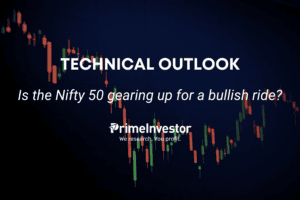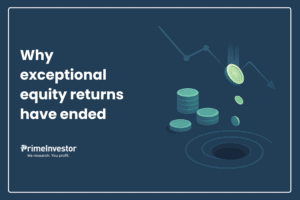Momentum style equity funds have delivered a stellar performance in the past year with returns of 55-56%, beating the Nifty50’s 28% hands down. This has led to a large fan following for the momentum style of investing, which bets on stocks with recent outperformance.

Many of you write in to ask why you can’t own momentum funds in place of small-cap funds or replace all your funds with momentum funds. If you don’t own any momentum style funds at all, then you can consider adding them. But should you go all-in on this style of investing – or, for that matter, whichever other style happens to surge to the top?
Momentum is an investment style that delivers its best in a roaring bull market. Should the market correct or slip into a time correction, they will likely lag while other styles do better. That brings up the question of ‘style diversification’.
Most investors, even the more seasoned among them, tend to diversify across market cap categories or AMCs when building their fund portfolios. But fewer pay attention to style diversification. Owning funds that follow different investing styles is critical to ensuring that your fund portfolio delivers across smooth returns. It is for this reason that we always maintain a mix of styles in our recommendations in Prime Funds.
(Read our earlier explanation on fund investment styles to know the kinds there are and to better understand the points we’re making here)
Why style diversification
There are three compelling reasons for getting style diversification into your fund portfolio.
#1 Performance across markets
Different investing styles tend to outperform in different market conditions. Therefore, if you want your portfolio to deliver across markets, you need style diversification.
For example, momentum style funds pack their portfolios with stocks that have gained the most in the last 3 months, 6 months or one year. Therefore, funds following this style deliver great returns in a trending bull market where investors are all chasing the winners. When the bulls make way for bears, stocks that gained the most are over-owned by market participants and so fall the most as everyone rushes for the exit. Therefore, when markets crash, momentum funds usually fall more than markets.
Value and dividend yield funds own out-of-favour stocks trading at low valuations based on metrics such as price-earnings, price-book or dividend yield. Such funds don’t perform in late-stage bull markets, because investors don’t care about valuations and have forgotten all the textbook rules of investing.
When the bears arrive however, value and dividend yield funds don’t fall as much as the market because their stocks are under-owned. Value and dividend yield funds also tend to deliver blockbuster returns in a rebound from a bear phase. When any bear market gives way to a new bull phase, it has a very different set of leaders which hail from the out-of-favour sectors. This makes value and dividend yield funds a good bet when markets are peaking out.
The quality style of investing, which screens stocks on fundamental parameters such as margins, management quality, return on equity and return on capital employed, works beautifully in the middle stages of a bull market. This is a phase when investors have finished marking up out-of-favour stocks and are beginning to pay more attention to fundamentals. In the fag end of a bull market however, quality falls by the wayside as investors go ga-ga over untried names and pie-in-the-sky themes.
The contra style of investing works in any phase of a bull market. Contrarian investors buy companies or sectors are temporarily in the doghouse because of internal or external events, but are of reasonable quality. Contra investing helps to make the most of sector rotation – a feature of long bull markets. It may not deliver great returns in bear phases, because most stocks are out-of-favour.
The low volatility and defensive styles of investing work best when fear is overruling sentiment and there is high risk aversion, causing wild two-way moves in the market. These styles lag in a trending bull market when caution is thrown to the winds.
History tells us which style will work best in which market. But in real life, it is very difficult to gauge if we are in the midst of an early stage, mid-stage or late-stage bull market, except with the benefit of hindsight.
This is why it pays to have multiple investment styles in the portfolio at all times, instead of switching between styles based on recent returns.
#2 Avoid portfolio overlaps
Many investors try to achieve diversification by owning multiple funds from different AMCs. But their purpose is defeated by portfolio overlaps.
For instance, our Portfolio Overlap tool shows that if you owned the top three flexicap equity funds (by assets) nearly 23% of their holdings would be identical. When you own funds with significant portfolio overlaps, you end up owning concentrated exposures to the few stocks that feature in all your funds. That is the exact opposite of the diversification you’re trying to achieve!
Portfolio overlaps occur mainly when fund managers use the same of metrics or screeners to pick stocks and construct portfolios. This boils down to the manager’s preferred style. All growth-oriented managers for instance screen stocks for growth in earnings, EBIDTA and revenues. Quality style managers will look at ROE, ROCE and management quality while not minding valuations much. Value-oriented managers would screen for valuations ahead of all these metrics.
When you own funds with contrasting styles, the lens through the fund managers evaluate stocks will differ. This reduces portfolio overlap and gives you true diversification. To test the veracity of this, all you need to do is to compare the top holdings of a contra fund with say a momentum fund or a value fund with a quality fund.
To illustrate this point, the portfolio overlaps between Parag Parikh Flexicap Fund – a value-oriented fund and Quant Flexicap Fund – a momentum fund, is only 6.7%. While the portfolio overlap between Axis Midcap Fund (quality/growth) and Nippon India Growth (growth) is 41%, that between HDFC Midcap Opportunities (Growth at a reasonable price) and Axis Midcap is a lower 27%.
#3 Overcoming biases
Diversifying your mutual fund portfolio across different styles is also important to overcome your personal biases in investing. When it comes to stock-picking, most of us are inherently biased towards one style or another.
Value-oriented investors used to looking at valuations first, would have completely missed the bus on new-age/consumption plays such as Zomato or Trent which have been outperformers. Similarly, quality conscious investors may not have given down-and-out PSUs another look three years ago. Contrarian investors will have similarly missed out on momentum-driven themes such as renewables or defence that have kept outperforming in recent times.
Owning funds which follow a style that you personally don’t follow, can help you counter-balance your own biases and benefit from a trending market. and even if you aren’t a stock investor and don’t have a personal bias, adopting style diversification will help you avoid being influenced by the current chart-toppers as well.
How to identify styles
Having said all this, the main challenge for investors looking to achieve style diversification is the task of slotting equity funds into their correct styles. For Prime Funds, it’s easy – the Why This Fund section will clearly give you the style the fund follows.
For other funds, identifying styles is slightly easier when the fund’s name is clearly suggestive of a style. Value, Contra, Dividend Yield funds for example should carry a value bias. Funds labelled growth, quality should normally be adherents of the growth or quality styles of investing.
However, even in such cases, it pays to run a quick check on the top holdings and portfolio to verify of the fund manager is being true to label. A value-styled fund should have a portfolio price-earnings or price-book multiple that is lower than the market. A contra fund should big bets on out-of-favour sectors/stocks. A momentum fund should have recent winners as its top holdings.
But while the above checks are more easily run, it can be tougher to bracket a flexicap, mid-cap, small-cap, or other generically named fund into a style bucket. In such cases, you can use the following checks to identify the fund’s style.
- The portfolio PE or P/BV can be a quick giveaway to a value or growth style fund. Valuations at a discount to markets are a sign of a value/contra style, at markets or mild premiums suggest a growth style and steep premiums to market suggest a quality style.
- High portfolio turnover usually suggests a momentum strategy
- High ROE/high PE names in the portfolio can be an indicator of the quality style
- If in doubt, you can compare active fund portfolios with those of factor indices or index-based funds, to gauge the manager’s style
Do note that a fund’s style in generic funds is usually closely associated with the fund manager. When the manager changes, the style can change too. Fund managers such as Sankaran Naren, Roshi Jain, Rajeev Thakkar, Mrinal Singh etc have long been associated with the contra and value styles of investing. Sailesh Bahn, Chirag Setalvad, Neelesh Surana, Vinay Kulkarni for the growth/growth at a reasonable price style. Shreyash Devalkar, Ajay Tyagi are known for a quality style of investing.
However, gauging this requires tracking the fund manager’s moves over a long time. Reading fund manager interviews and social media posts gives us clear cues on which style of investing a manager favours.
Finally, do note that it is not necessary to pack your portfolio with every style there is in the market. Owning funds that combine two or three contrasting styles is enough to achieve good results. The following opposing styles tend to work well together in combination.
Value/Dividend Yield + Quality
Growth + Value/Contra/Dividend Yield
Momentum + Value/Dividend Yield/Contra
Momentum + Low volatility
Quality + Momentum
Growth + Value/Dividend yield/Contra





12 thoughts on “Why your fund portfolio needs style diversification”
Very nice article
Thank you!
Useful. Have invested in many overlapping schemes. I Need to work on this. Thanks.
Any guidance will help me.
Try to achieve style diversification by picking funds from Prime Funds that are clearly labelled – contra, value, dividend yield etc
In this post https://primeinvestor.in/reports/6-investment-styles-which-one-suits-you/ you have mentioned that Index funds are like momentum funds. It’s a fascinating observation. Could you throw some more light or have a post sometime in the near future that elucidates this…
That’s because in india stocks are included in the indices based on the size of market cap. Therefore performing stocks automatically get into the indices and those lagging get dropped out. This is the momentum strategy!
Beautiful Post. Thank you. Worth every moment of the time spent reading it.
Two suggestions:
1. Since you folks review all the funds before creating your recommendation – can you think of adding a column about the style of the fund… (I know for the recommended funds in the detailed i – you provide – but a quicker visible way would be very helpful – across the funds.
2. A future post on your perspective about the fund manager styles – who have been in the market for a reasonable period of time, can be another valuable help [I understand this gets a little too personal about a professional manager… but then they are handling public money and a perspective is still fair, IMO.]
Thank you. Will try to act on both your suggestions
Excellent article Aarati !
Bang on !!
In fact for my own Equity portfolio, I have over-simplified this concept even further. I merge most of these categories under just two heads (only for myself):
1. Aggressive styles (Momentum, Quant, Growth, Smallcap, Thematic, Fancy Sectoral etc.)
2. Conservative styles (Value, Contra, Large Cap, Flexi cap, Quality, Dividend Yield, Low volatility etc.)
A combination of these 2 styles for a very long term core portfolio has worked really well for me. Since my direct stock investments also fall under the first category, I include that too in the first head.
Thank you! That’s an excellent approach.
Thank so much for this article! I feel like I’d been waiting for this article to come out from Primeinvestor’s end. I’d earlier came across this concept in multiple places, but I felt the details around style identification and style combination were lacking sufficient detail for a common investor’s actionability – for example in Arun Kumar’s articles and book, some articles on combining complementary factors into a portfolio, etc.
I look forward to seeing this “style”- combination analysis become part of the Portfolio review tool someday not too far in the future!
Thank you. We already consider styles when making our Prime Funds recommendations.
Comments are closed.